Pics That Show What It Was Like To Travel On An Ocean Liner
Before the 20th century, ocean travel could be an unpleasant, dangerous, and spartan experience — but with the emergence of luxurious, coal- and oil-powered long-distance ocean liners, traveling the world via ship took on a certain air of luxury.
While ocean liners also carried passengers in modest accommodations, those who paid for first class tickets could expect nothing but the finest treatment for their days at sea. While the jet age eventually made ocean liners obsolete, these images show just how magical these great ships truly were.
The most famous ocean liner of all.
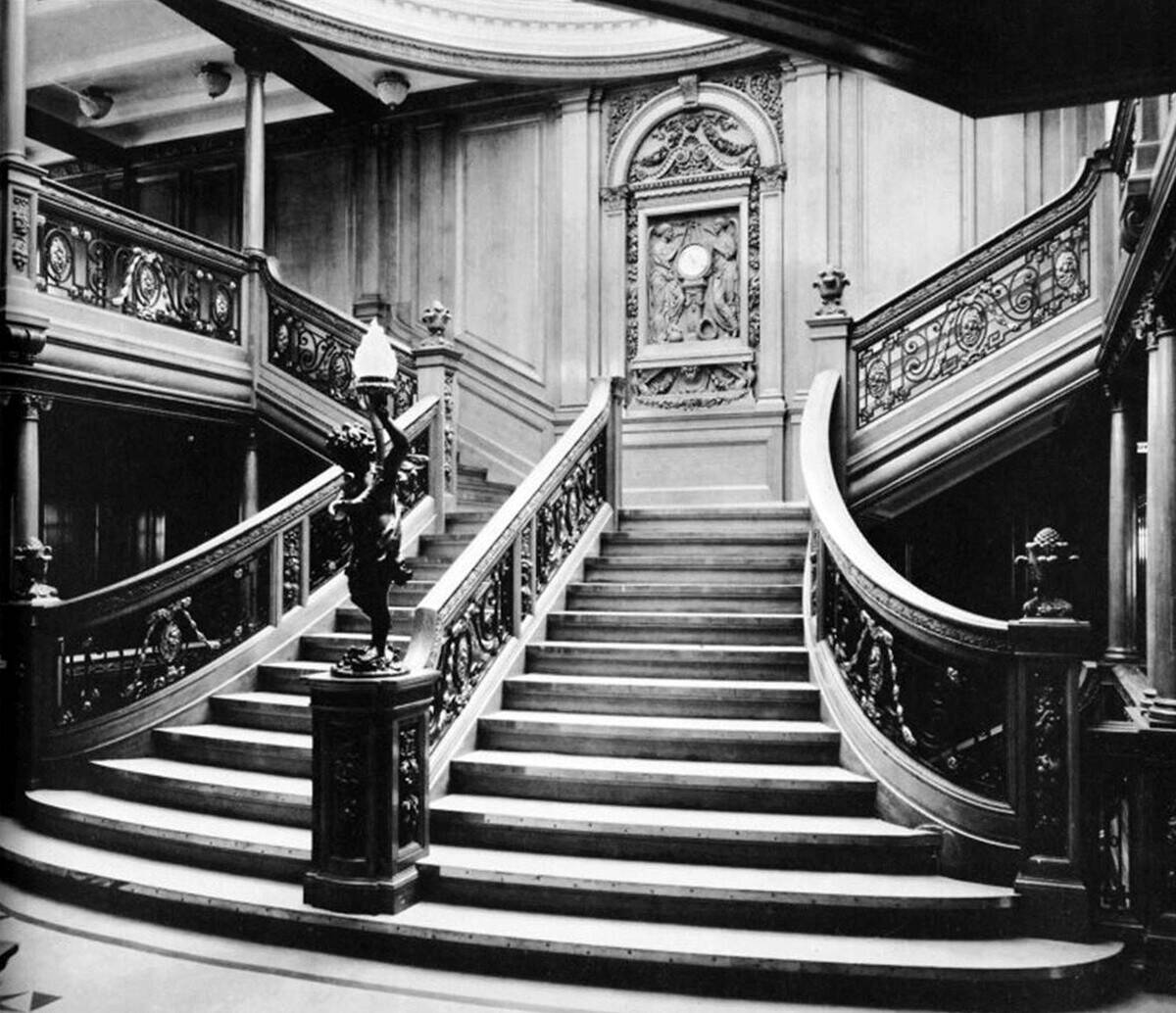
The Titanic would likely be a historical footnote today had it not met an untimely end on its very first voyage. Because of the notoriety of the ship’s sinking, though, it immediately became the most famous ocean liner of all time — a position it still holds today.
This image shows perhaps the most defining feature of the ship’s interior, its magnificent Grand Staircase. This served a practical function as a passenger thoroughfare, but also successfully showcased the grandeur of the ship itself.
First class on the RMS Queen Mary.
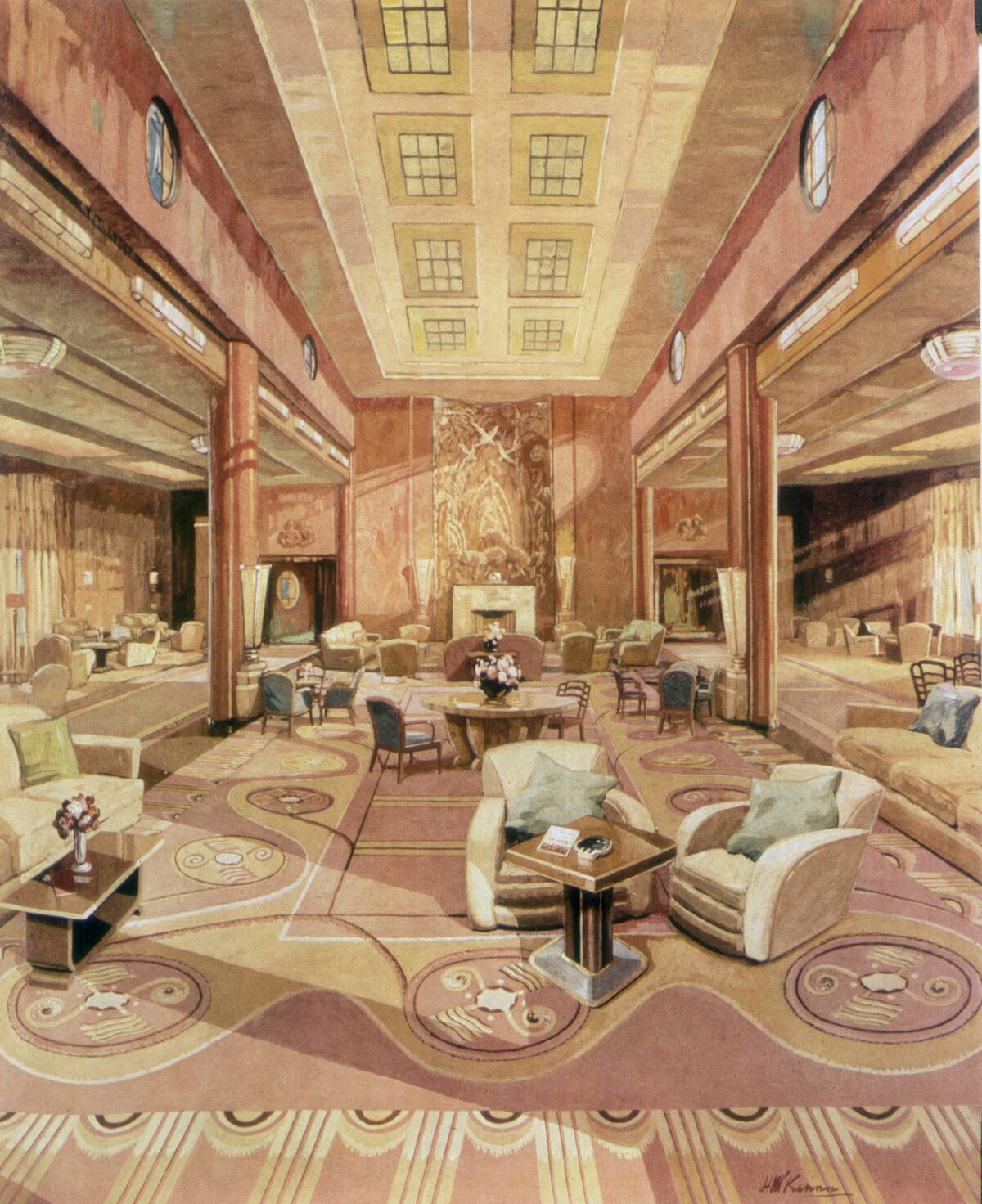
The RMS Queen Mary was one of the most venerable ocean liners of its era. When she was launched in 1934, her art deco designs — seen here in a first class lounge — paved a bold new path in ship design.
The ship enjoyed a long career as a passenger liner and troop ship, winning the prestigious Blue Riband for fastest Atlantic crossing. After being retired in 1967, the Queen Mary was towed to Long Beach, California to serve as a museum ship.
Enjoying the sports deck during an Atlantic crossing.
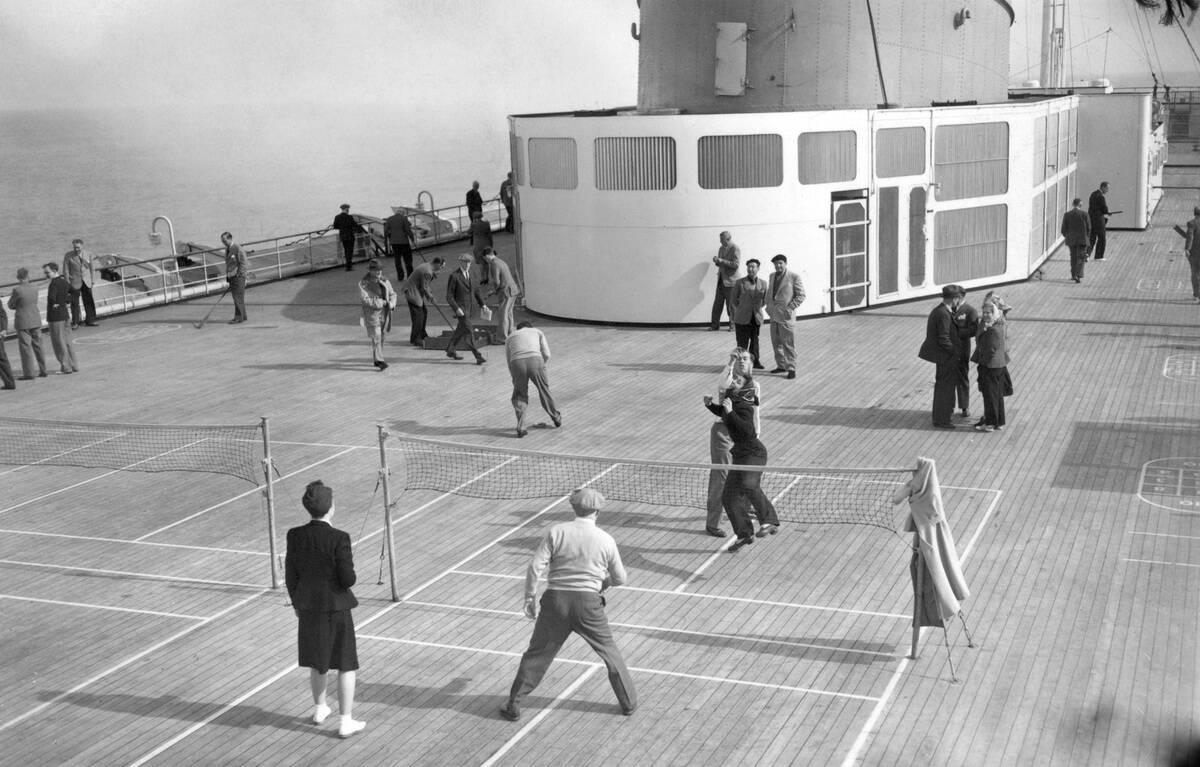
Much like modern cruise ships, the deck areas of ocean liners provided a large area for passengers to get some fresh air and exercise when the weather cooperated.
Ocean crossings could take days or even weeks, so crew made an effort to offer deck games and sports to promote leisure and social interaction. Popular games included shuffleboard, tennis, ring-toss, and golf putting greens. Some ships even had swimming pools.
Lionel Barrymore departs for Europe.
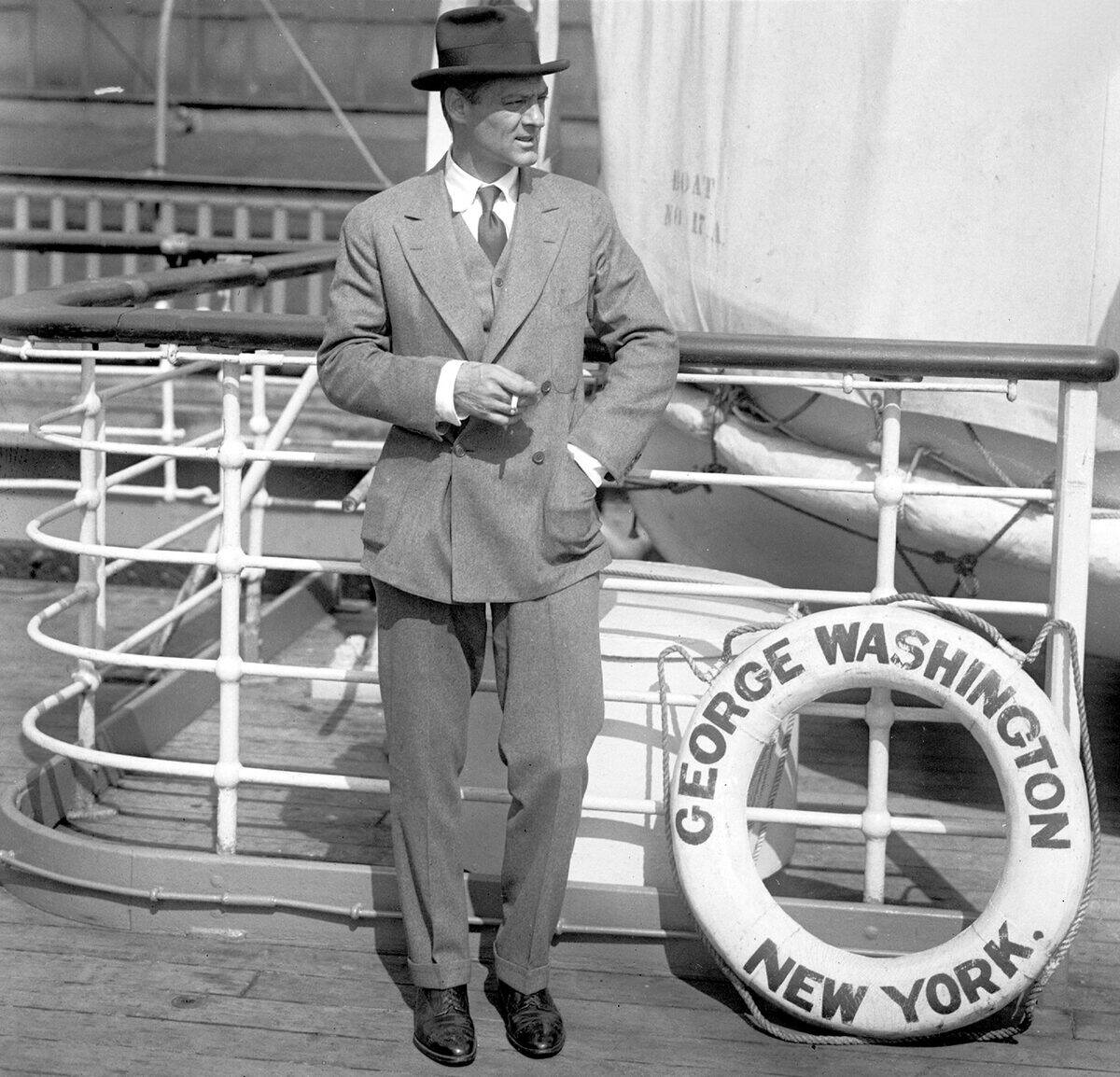
Celebrities were a frequent sight on ocean liners, as these ships were the primary mode of long-distance travel for decades.
Lionel Barrymore, a famous actor of stage and film, was popular on both sides of the Atlantic, which is why he was spotted on the SS George Washington as the ship departed New York for Europe.
Making use of the sunny weather.
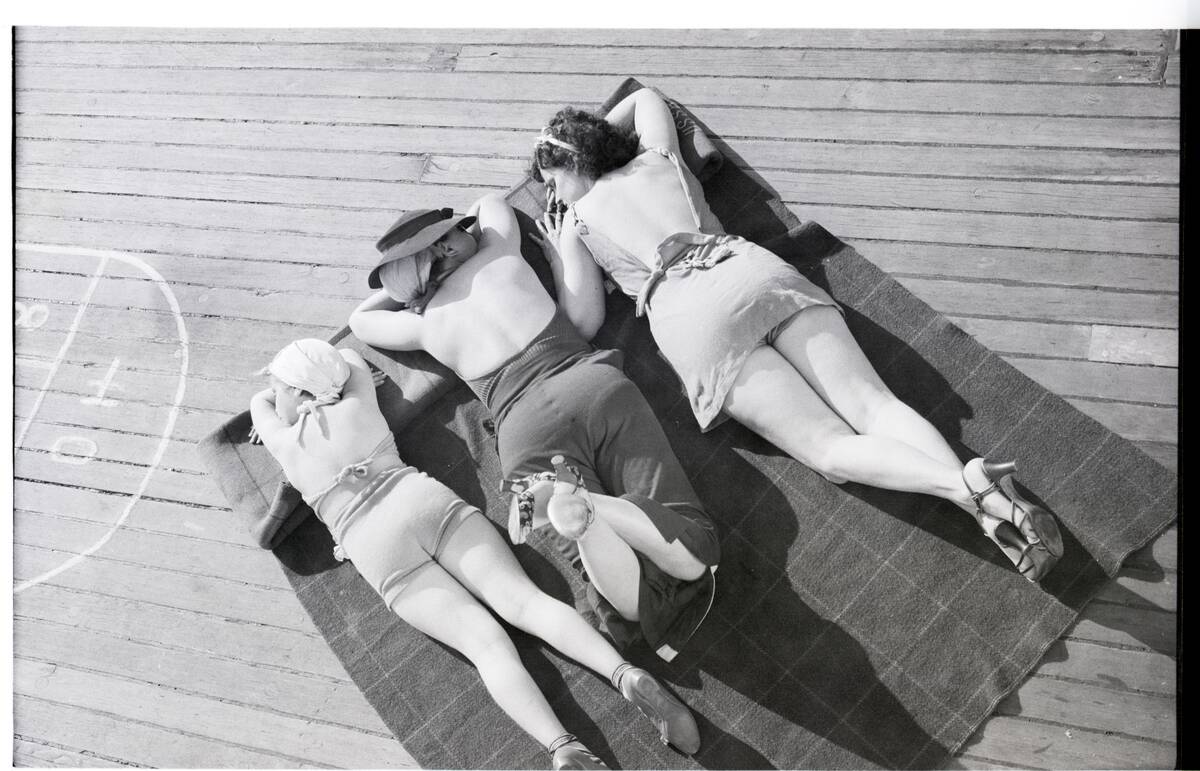
Sunbathing was a fashionable activity in the early years of the 20th century, and ocean liners — with their large decks and exposure to sunshine — were an ideal venue to catch a few rays.
While these women are content to share a large blanket, passengers also had the use of lounge chairs for sunbathing. Some ships even offered solariums and sunlamp rooms for passengers to use on chilly days at sea.
Saloon deck aboard the RMS Lusitania.
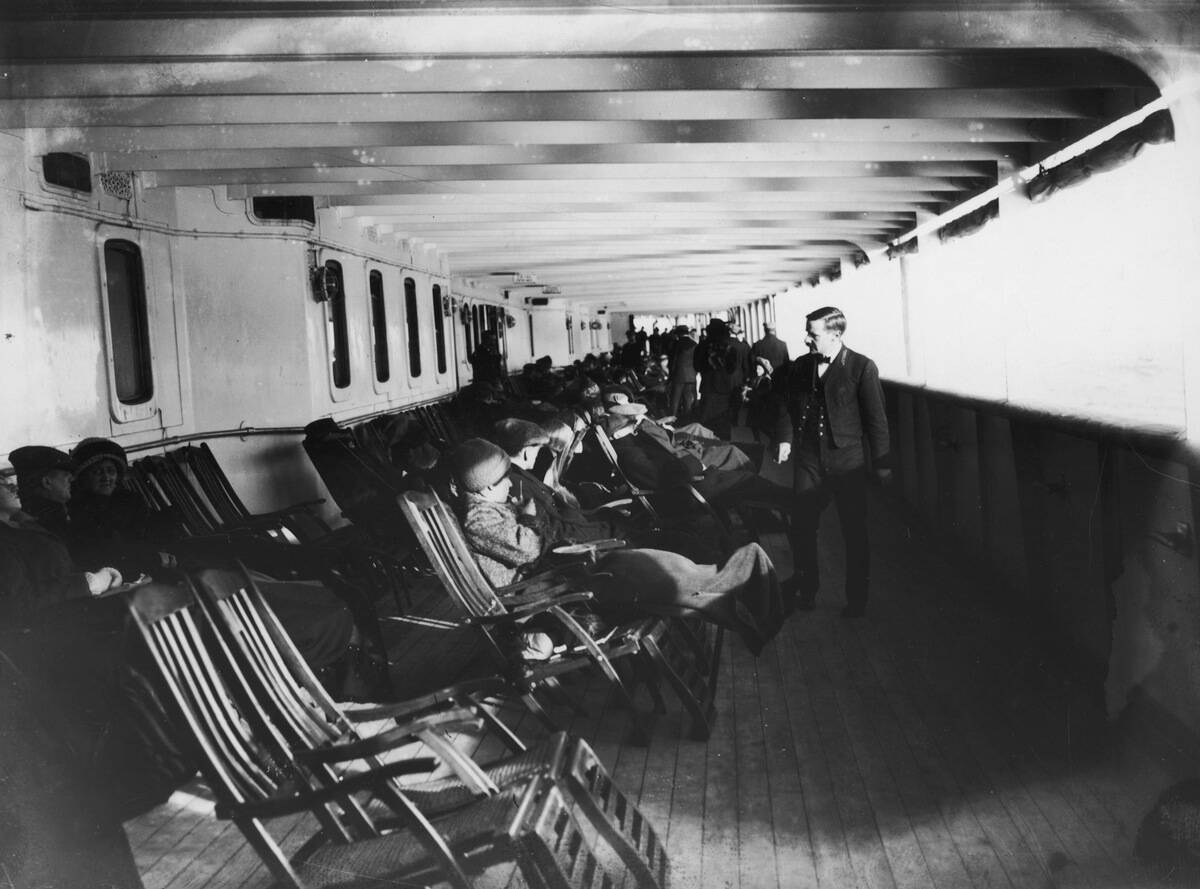
Aside from the Titanic, the Lusitania — which was sunk by a German torpedo during World War I — is probably the 20th century’s most famous ocean liner disaster.
This image shows the ship’s saloon deck, which was an open-air promenade for passengers to stroll along. While upper decks were fully open to the elements, saloon decks typically offered at least some protection.
Refitting the RMS Mauretania after World War II.
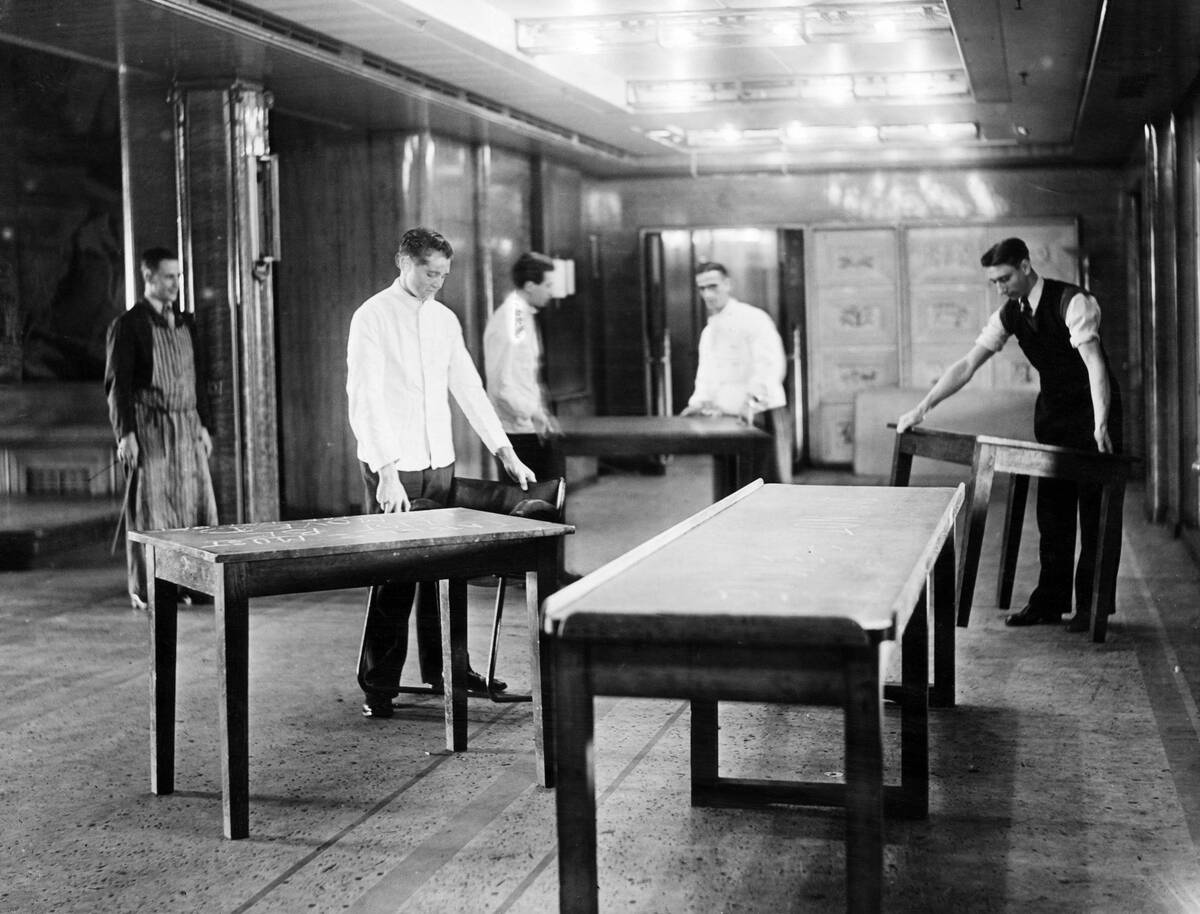
Ocean liners, particularly those made in Great Britain, were generally subsidized by the government. This was done because, in times of conflict, the ships could be pressed into service for the war effort.
Two world wars aligned with the golden age of ocean liners, so many liners were used as troop ships. This image of the RMS Mauretania shows workers refitting it after the end of World War II, which was an extensive process.
The luxurious Normandie.
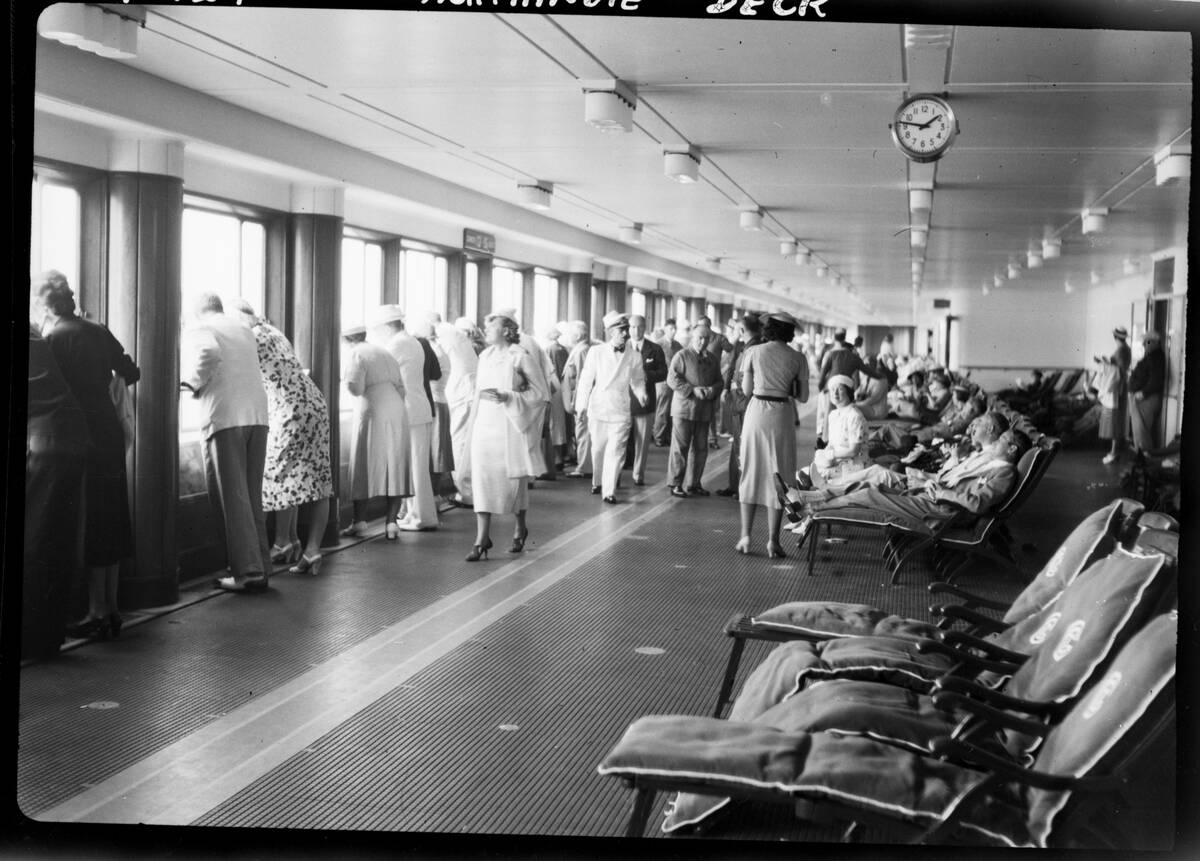
The SS Normandie set new standards for ocean liners when she was launched in 1935 by the French Line (Compagnie Générale Transatlantique), as she immediately became the largest and fastest passenger ship in the world.
Unfortunately, the ship had a tragically short lifespan. In 1942, after being seized by the U.S. and converted into a troop ship during World War II, a devastating fire broke out on board while she was docked in New York, destroying the grand ship.
A deck party on the SS Île de France.
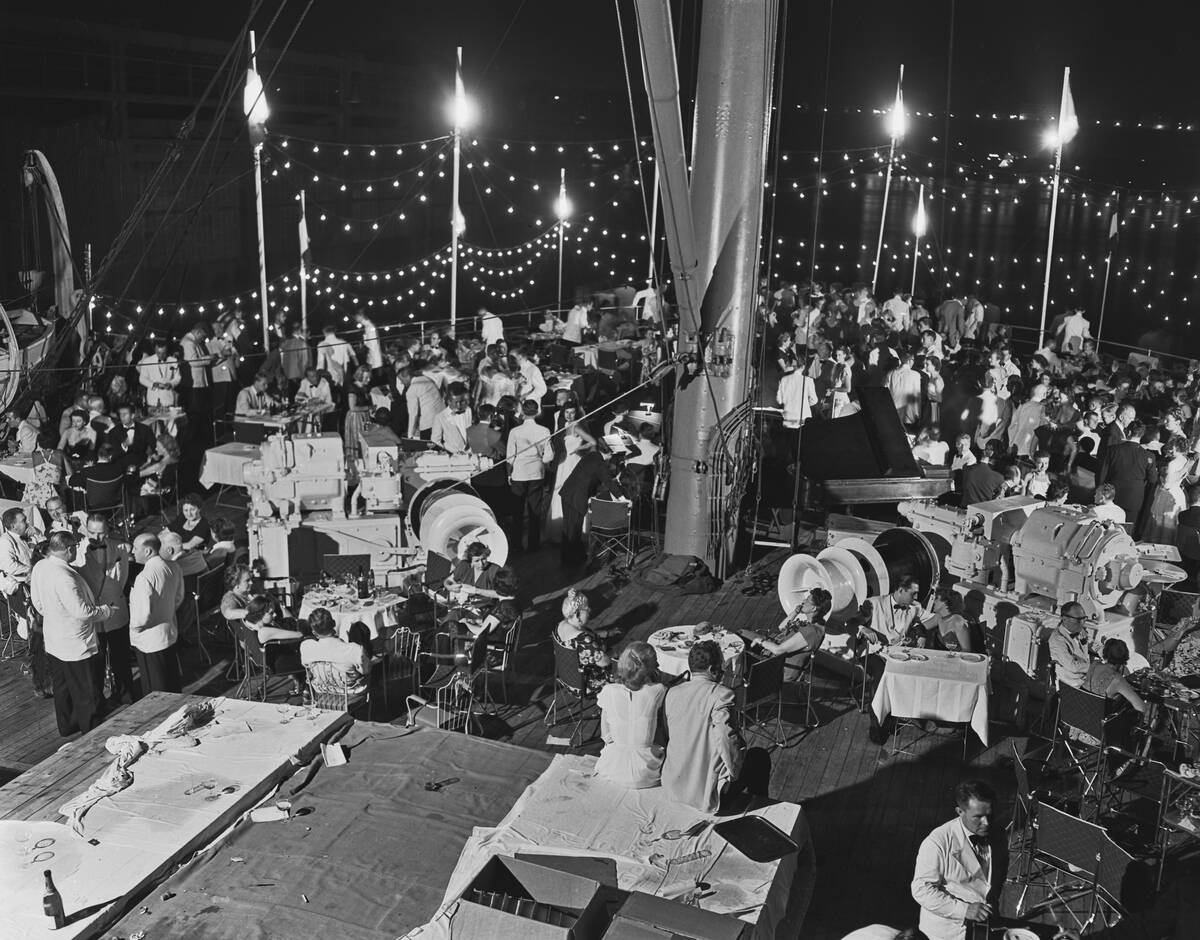
Modern cruise ships take a lot of their entertainment cues from the ocean liners of old, and events were frequently held to commemorate not just holidays, but also departures and arrivals.
This 1950 image shows the SS Île de France in her postwar glory, as passengers gather on the deck for a grand nighttime party. The ship enjoyed a long career and was eventually retired in 1959.
A crowded scene as passengers wait to be processed.
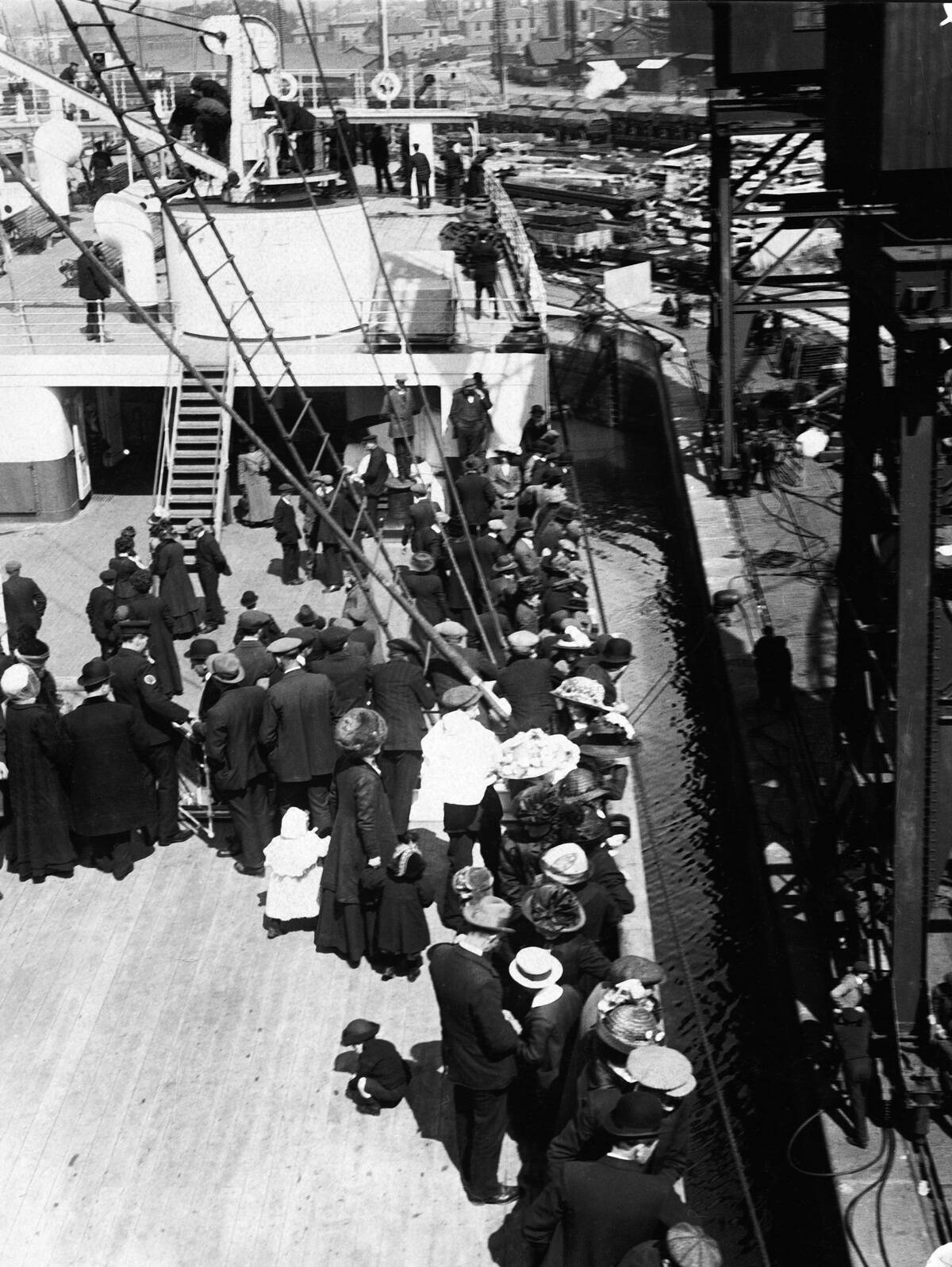
Wealthy passengers could expect an opulent experience on ocean liners, but for those in second and third class, the experience was very different.
For these passengers, ocean crossings were done out of necessity, frequently as part of the process of immigrating to a new homeland. This late 1920s image shows immigrants aboard the RMS Olympic as they await processing in New York.
An open-air orchestral concert.
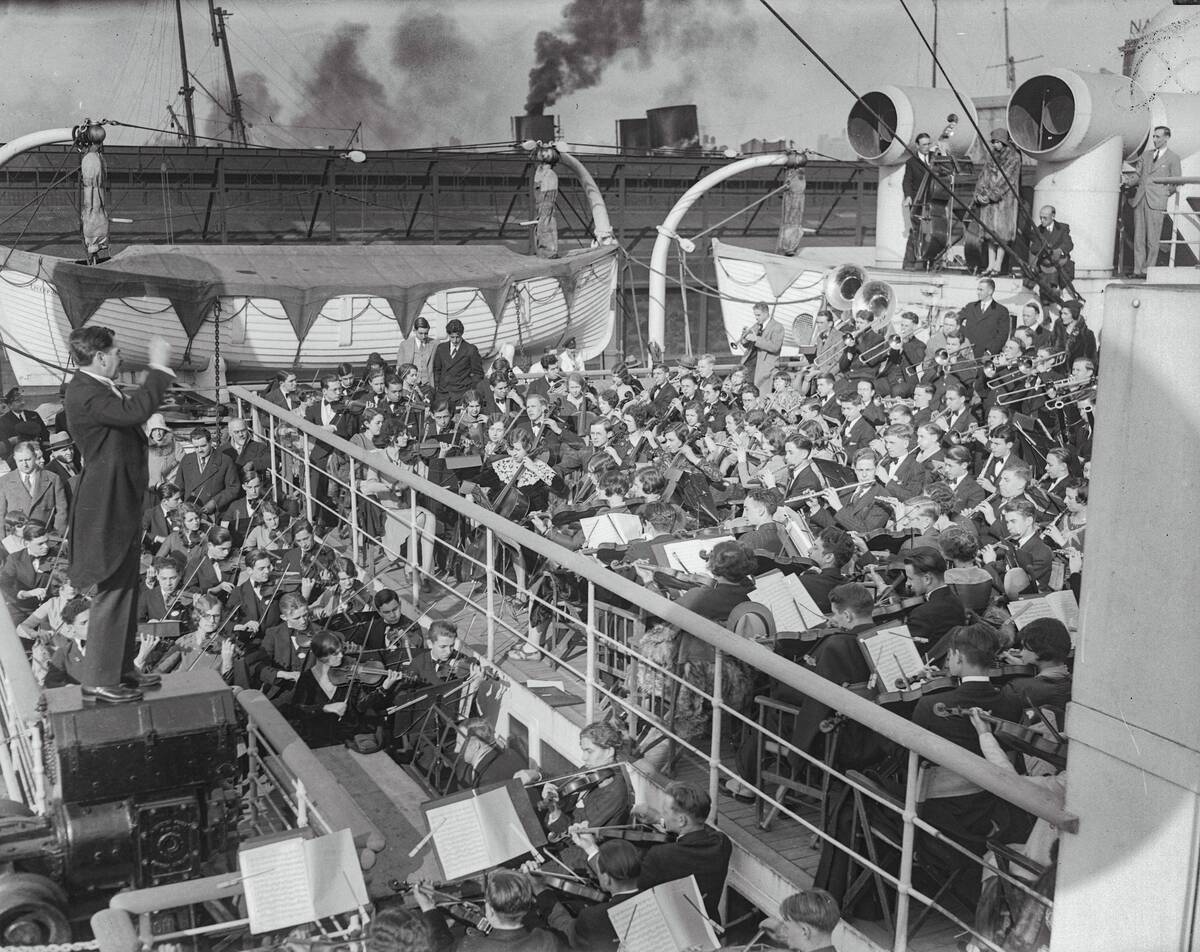
Live music was a presence on virtually every ocean crossing, as music could break up the monotony of a long crossing. The band on the Titanic famously played until the very end, which helped to entrench live music as an integral part of the ocean liner experience.
Orchestras and bands were generally well-versed in both classical music and contemporary tunes, giving them the flexibility to play to virtually any kind of crowd.
Silly deck games during a crossing.
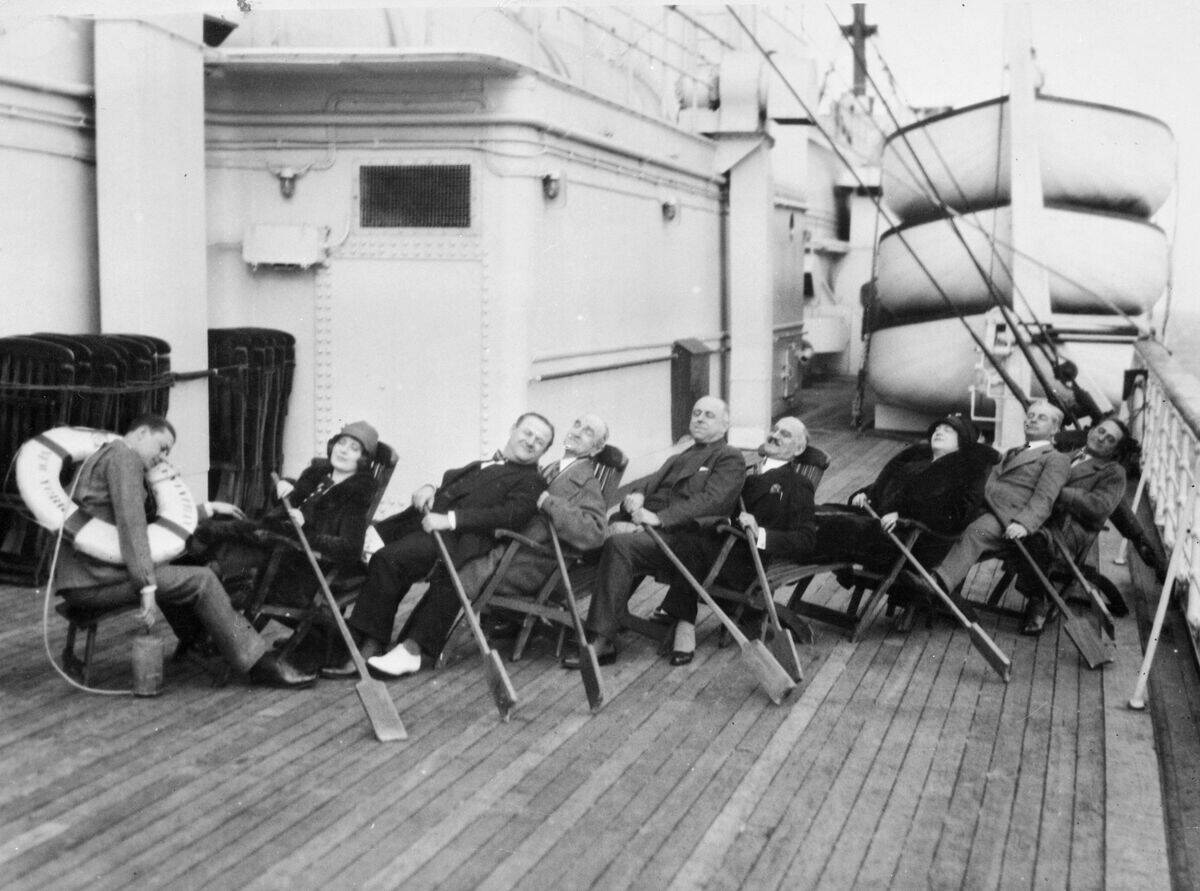
Passengers aboard ocean liners described the experience as being similar to living in a small city for a few days, which makes sense. Ocean liners could carry thousands of passengers and had many of the amenities of a good-sized town.
Of course, it was also a very different environment than what people experienced on land, and as such, things could get a tad silly at times. These passengers are engaged in some sort of rowing pantomime on the deck of an ocean liner.
Aboard the SS Empress of Britain.
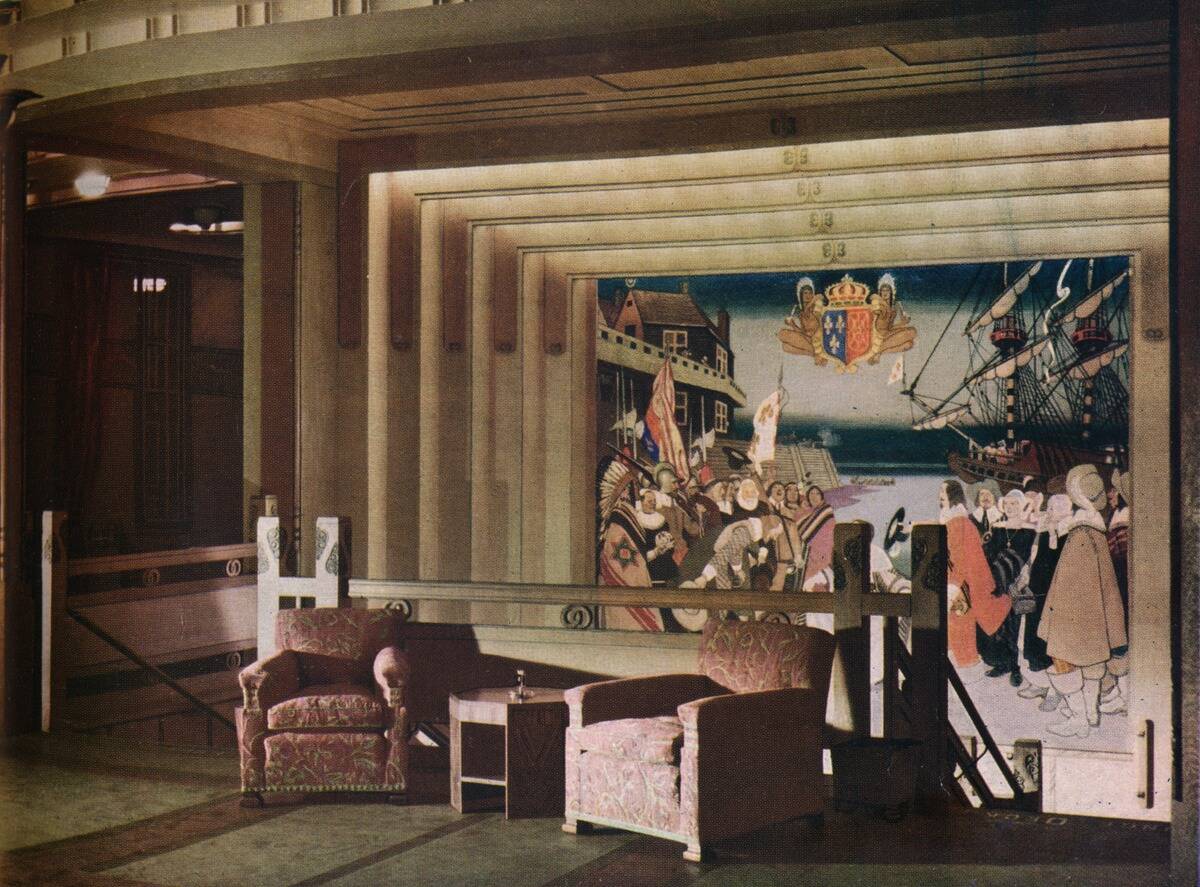
The Empress of Briain, launched by the Canadian Pacific Railway in 1931, was a reliable transatlantic liner running service between Canada and the United Kingdom.
This image of a lounge on the ship shows artwork depicting the history of Quebec City, one of the ship’s ports of call. In 1940, the ship was tragically sunk by a torpedo off the coast of Ireland.
Passengers on the Queen Elizabeth 2.
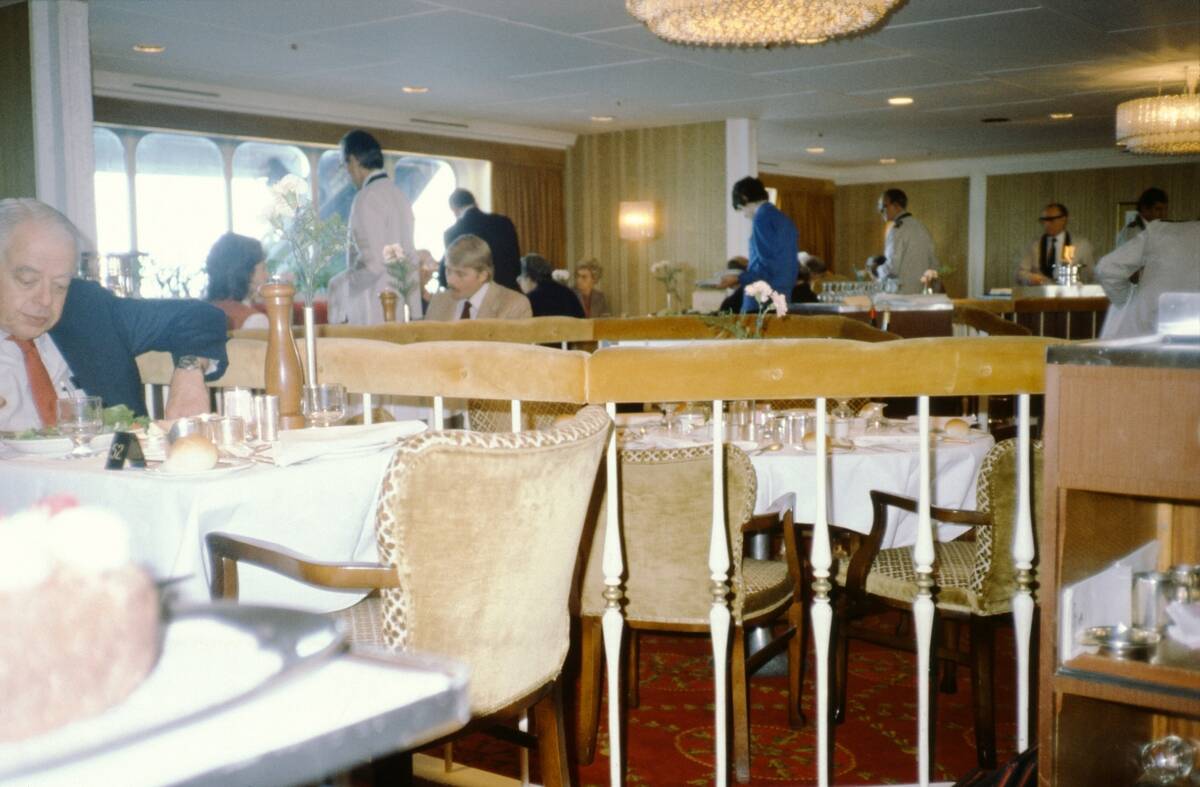
The Queen Elizabeth II wasn’t the last ocean liner — that honor belongs to the Queen Mary II, which was launched in the 21st century — but it’s one of the last ocean liners that was built during this golden era.
This 1970s image of the dining room on the QE2 shows that there was still a small market for oceanic travel at this point in history — but the era was swiftly drawing to a close.
Leaving New York at the end of an era.
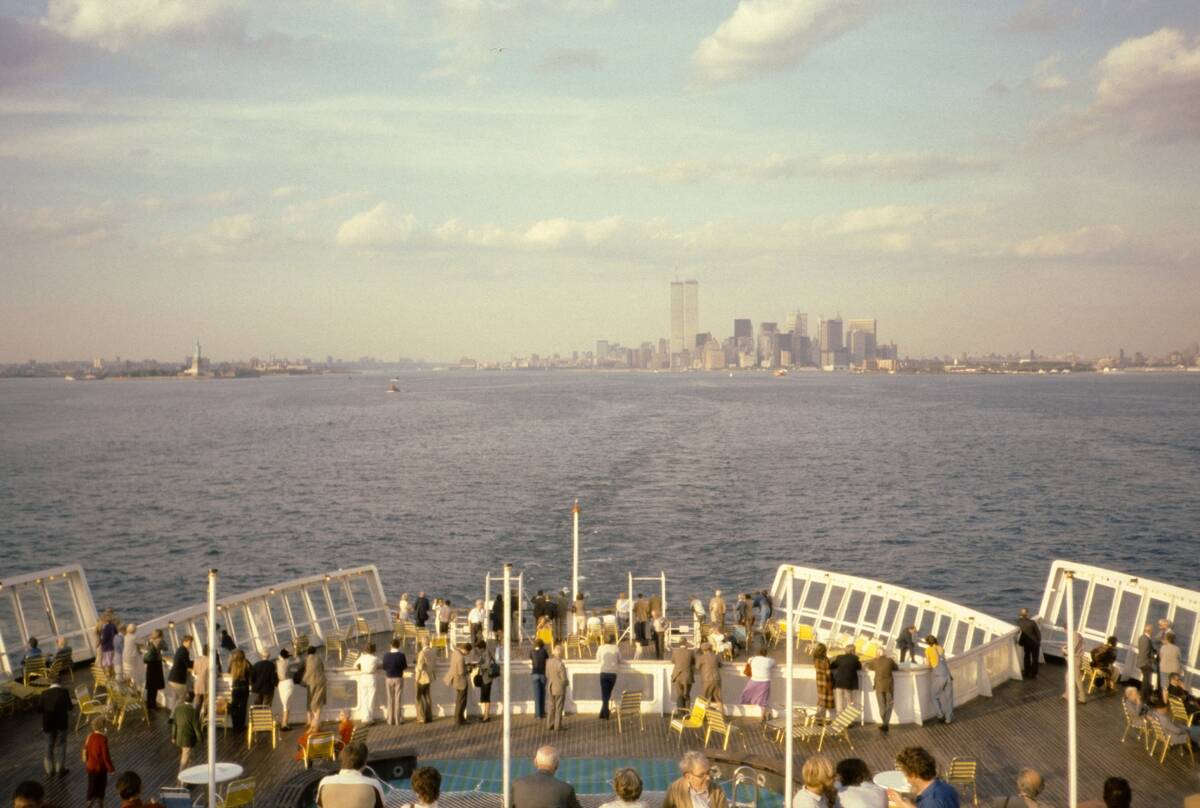
This photo, taken from the same 1975 Atlantic crossing, shows the skyline of Lower Manhattan as it disappears into the horizon.
The QE2 continued her service until 2008, long after the golden age of ocean liners had ended. Following her retirement, the ship was sent to Dubai to be used as a floating hotel and museum.



